Model Signal Impairments at Complex Baseband
In this article, we develop complex-baseband models for several signal impairments: interfering carrier, multipath, phase noise, and Gaussian noise. To provide concrete examples, we’ll apply the impairments to a QAM system. The impairment models are Matlab functions that each use at most seven lines of code. Although our example system is QAM, the models can be used for any complex-baseband signal.
I used a very simple complex-baseband model of a QAM system in my last post to show how to compute the modulation error ratio (MER) [1]. This article uses a similar QAM system model.
Figure 1 is a simplified block diagram of a QAM system. The transmitter includes a source of QAM symbols, a root-Nyquist pulse-shaping filter, and a Quadrature modulator. The receiver has a Quadrature downconverter, root-Nyquist filter, and decision block. The wide lines represent complex (I/Q) signals, and the narrow lines represent the real modulated signal. We refer to the I/Q signals as complex-baseband signals [2]. The matched root-Nyquist filters perform the dual tasks of limiting the bandwidth of the transmitted signal while minimizing the interference from other symbols at the sampling instant [3,4]. For our purpose of modeling impairments, I have left out the usual key receiver systems of AGC, carrier recovery, clock recovery, and adaptive equalization.
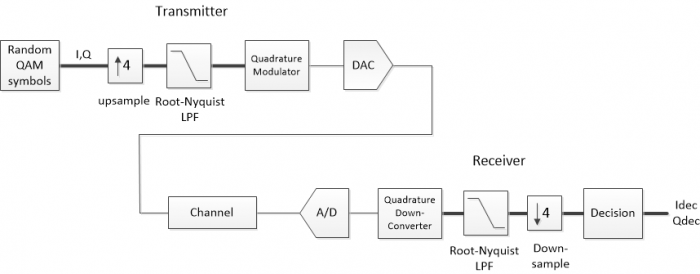
Figure 1. Simplified QAM system block diagram.
We’ll model the channel at complex baseband, so we can eliminate the Quadrature up and down conversions. This is more efficient than modeling the modulated signal, because the sample rate need only be greater than 2X the I/Q signal bandwidth, rather than 2X the frequency of the modulated signal. Since we’ll model the entire system as discrete-time, the D/A and A/D converters will be left out. We then have the block diagram of Figure 2. Again, keep in mind that this model does not include any clock or carrier error, and has no clock or carrier recovery loops. It is useful for modeling linear impairments, but it is not valid for some nonlinear impairments, for example clipping of the modulated signal. I have created two Matlab functions for the transmitter and receiver, qam_tx.m and qam_rx.m. These are listed in Appendix A of the attached PDF document. Matlab functions for the different channel impairment cases are listed in Appendix B of the PDF document. Their names are shown underneath the “Channel Impairments” block in Figure 2.
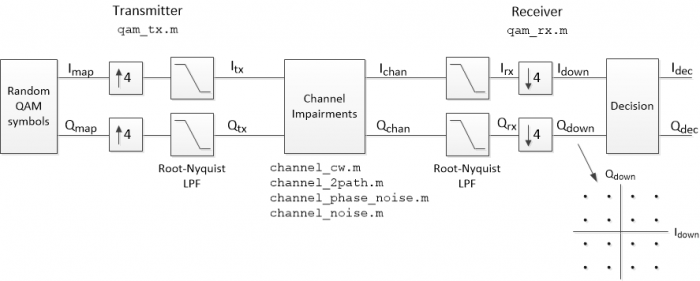
Figure 2. Simplified QAM system at complex baseband.
Figure 3 plots some of the labeled signals from Figure 2 for a QAM-16 system impaired by Gaussian noise. The plots were generated using qam_tx.m, channel_noise.m, and a modified version of qam_rx.m (see section 4 below for details). Figure 3a shows the random QAM symbols as a Qmap vs Imap constellation plot. The spectrum of the transmitted signal Itx/Qtx is plotted in Figure 3b. Figure 3c is an eyeplot of the output of the receiver’s root-Nyquist filter, Irx. At this point, the signal has 4 samples per symbol, so the valid sampling instants are spaced 4 samples apart. For our simplified model, the eye opening aligns exactly with every fourth sample (A real-world receiver must compute the correct sample value using a variable interpolator). The eyes are partially closed due to the noise added to the signal. Downsampling Irx and Qrx by 4 at the correct sample alignment gives the symbol-rate signals Idown and Qdown, who’s constellation plot is shown in Figure 3d. The noise is visible as “fuzz” around the nominal constellation points.
Now we’ll develop the complex-baseband impairment models and see how they affect QAM signals. Matlab code for the impairment models is listed in Appendix B of the PDF document. In the following, the function qam_rx.m plots the constellation Qdown vs. Idown and also computes MER.
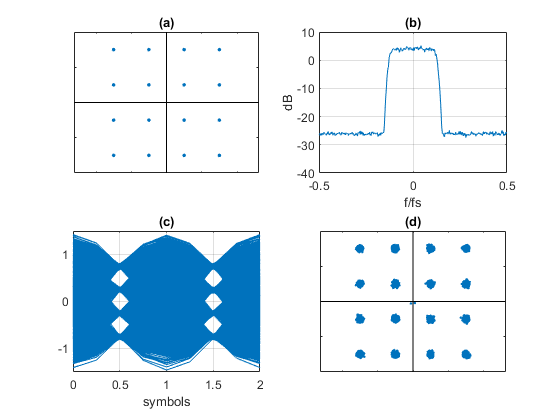
Figure 3. Signals from Figure 2 for QAM-16 modulation with added noise.
a. Imap/Qmap constellation b. Ichan/Qchan spectrum c. Irx eyeplot d. Idown/Qdown constellation
1. Interfering Carrier Model
At complex baseband, a sinusoidal signal with magnitude A and frequency ω0 is represented as:
$$ A exp(j\omega_0nT_s)= A cos(\omega_0nT_s)+jAsin(\omega_0nT_s) $$
Where n is sample index and Ts is sample time. To model an interfering carrier, we simply add this signal to Itx/Qtx (see Figure 4):
$$ I_{chan}= I_{tx}+A cos(\omega_0nT_s) \qquad \qquad $$
$$ Q_{chan}= Q_{tx}+A sin(\omega_0nT_s) \qquad (1)$$
Equation 1 is implemented by the Matlab function channel_cw.m, which is listed in Appendix B of the PDF document (cw stands for continuous wave). The following code creates a QAM-64 signal, adds an interfering carrier, and plots the receiver constellation. It also computes the carrier-to-interference ratio (C/I). For this example, the interferer amplitude A = 0.25, f0= 14 Hz, and fs= 100 Hz.
M= 64; % constellation order
N= 8192; % number of symbols
[Itx,Qtx]= qam_tx(M,N); % create complex baseband QAM signal
A= .25; % interferer amplitude
f0= 14; % Hz inteferer freq
fs= 100; % Hz sample freq
[Ichan,Qchan]= channel_cw(Itx,Qtx,A,f0,fs); % add interferer
% compute C/I
Psig = sum(Itx.^2 + Qtx.^2)/(4*N); % avg. signal power
Pint= A.^2; % interferer power
CtoI= 10*log10(Psig/Pint)
% simplified QAM RX – plot constellation
qam_rx(M,Ichan,Qchan)
The spectrum of Ichan + j*Qchan is plotted in figure 5, showing the interferer at 14 Hz. The asymmetry of the complex spectrum should come as no surprise. The C/I ratio is computed as:
CtoI =10.2304 dB
The QAM constellation plotted by qam_rx.m is shown in Figure 6. Here, the interference is visible as a circle around each constellation point. The radius of the circle is equal to the amplitude of the sinusoidal interferer after filtering by the receiver’s root-Nyquist filter. In this example, the interferer results in received signal MER of 22.3 dB. This is not equal to the C/I at the receiver input, because the interferer at 14 Hz is attenuated by the receiver’s filter.
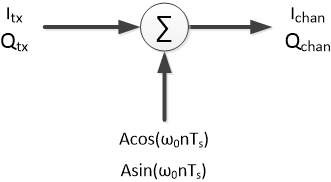
Figure 4. Complex-baseband channel model for interfering carrier.
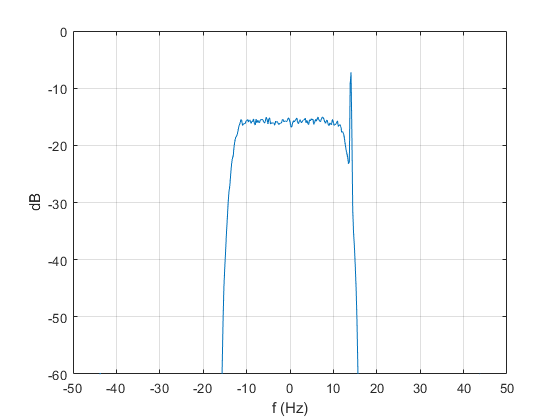
Figure 5. Spectrum of Ichan + j*Qchan showing interfering carrier at 14 Hz.
y= Ichan + j*Qchan;
[P,f]= pwelch(y,hanning(512),256,512,fs);
P= fftshift(P); % shift center freq to 0 Hz
f= f- fs/2; % shift center freq to 0 Hz
PdB= 10*log10(P); % dB psd estimate
plot(f,PdB),grid
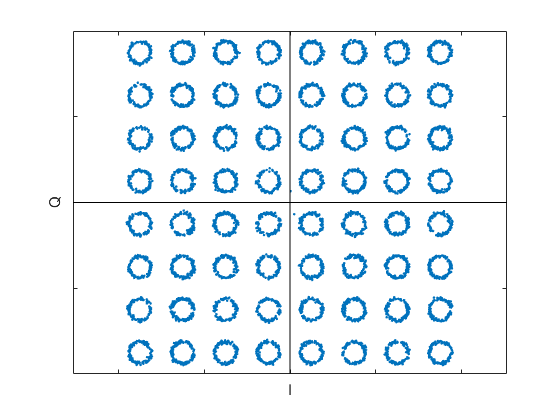
Figure 6. QAM-64 constellation plot of Qdown vs Idown with interfering carrier.
2. Multipath Model
Multipath occurs when a signal follows more than one path to the receiver. The multiple paths have different delay, amplitude, and phase, with possible time-variation of these parameters. The channel can be described by a main path with gain of 1.0, plus one or more paths with different delay, amplitude and phase with respect to the main path. The multipath channel transfer function can be written as:
$$ H(\omega)= 1+b_1exp(-j\omega T_1)+b_2exp(-j\omega T_2) + ... \qquad (2) $$
where the bi are complex and the Ti are the (continuous-time) delays of each path with respect to the main path. In order to model multipath as a sampled system, we assume $T_1 \approx kT_s,\ T_2 \approx mT_s $, etc., where k and m are integers. (If this assumption is not accurate for a given system, the sample rate of the model can be increased to make Ts << Ti). Then, substituting z= exp(jωTs) into Equation 2, we get:
$$ H(z)= 1+b_1z^{-k}+b_2z^{-m}+ ... \qquad (3) $$
H(z) looks familiar – it is just the transfer function of an FIR filter (with b0 = 1). The filter coefficients are complex. The number of taps depends on the longest delay Tmax: Ntaps = round(Tmax/Ts) + 1. Only the taps that match a path delay receive non-zero coefficients.
The simplest multipath system has two paths: a two-path model at complex baseband is shown in Figure 7. Here, b1 = Aejφ and the multiplier is full-complex. For a two-path model, only the first and last taps are nonzero.

Figure 7. Complex-baseband channel model for two-path.
2.1 Multipath Channel Response
Let’s look at the response of a two-path channel when the input is a unit impulse. For this example, we’ll use the fixed parameters A = 0.15, φ = π/3, and k = 5 samples. We will use the Matlab function channel_2path.m to implement a complex FIR filter based on these parameters (see Appendix B of the PDF document). Here is the code to find the channel output Ichan/Qchan:
A= 0.15; % amplitude of 2nd path
phi= pi/3; % rad phase of 2nd path
k= 5; % samples delay of 2nd path
% find channel impulse response
Itx= [0 1 0 0 0 0]; % impulse input
Qtx= [0 0 0 0 0 0];
[Ichan,Qchan]= channel_2path(Itx,Qtx,k,A,phi);
The real and imaginary parts of the channel’s impulse response are plotted in Figure 8 a and b. The magnitude response is shown in Figure 8c. The channel has an amplitude ripple of roughly 2.5 dB. The delay response is plotted in Figure 8d: Delay ripple is roughly 1.5 samples. Magnitude and Delay responses were computed as follows:
fs= 1;
y= Ichan + j*Qchan;
[h,f]= freqz(y,1,256,'whole',fs);
H= 20*log10(abs(h)); % Magnitude response, dB
H= fftshift(H); % shift center freq to 0 Hz
[D,f]= grpdelay(y,1,256,'whole',fs); % group delay in samples
D= fftshift(D); % shift center freq to 0 Hz
f= f- fs/2; % shift center freq to 0 Hz

Figure 8. Multipath Channel Response
a. Real part of impulse response b. Imaginary part of impulse response
c. Magnitude response d. Group Delay
2.2 QAM-16 signal applied to a multipath channel
Using the same channel parameters as above, we’ll look at how the two-path channel affects a complex-baseband QAM-16 signal. The QAM signal has 4 samples per symbol, so the multipath delay k of 5 samples equals 1.25 QAM symbol times. Here is the code to generate the QAM signal, apply it to the channel, and plot the receiver constellation:
A= 0.15; % amplitude of 2nd path
phi= pi/3; % rad phase of 2nd path
k= 5; % samples delay of 2nd path
M= 16; % constellation order
N= 8192; % number of symbols
[Itx,Qtx]= qam_tx(M,N); % create complex baseband QAM signal
[Ichan,Qchan]= channel_2path(Itx,Qtx,k,A,phi); % 2-path channel model
qam_rx(M,Ichan,Qchan) % simplified QAM RX -- plot constellation
The Spectrum of the QAM signal Ichan + j*Qchan at the output of the channel model is shown in Figure 9. Consistent with the magnitude response of Figure 8c, the channel has produced about 2.5 dB of amplitude ripple. The QAM constellation plotted by qam_rx.m is shown in Figure 10. The inter-symbol interference (ISI) caused by multipath is pronounced. Note the tilt of the cloud around each constellation point depends on the phase angle of the second path. A signal with narrower bandwidth would suffer less delay variation and thus less ISI. For example, a multi-carrier QAM system such as Orthogonal Frequency Division Multiplexing with its narrow subcarriers is less sensitive to multipath, and requires only a simple scaling of amplitude and phase of each subcarrier to adapt to the channel.
In modeling multipath, we typically don’t know precise or even approximate values of amplitude and delay. We just have estimates of the range of these parameters. The parameters can be set to arbitrary values over their ranges, which allows testing receiver subsystems such as adaptive equalizers.

Figure 9. Spectrum of QAM signal at output of 2-path channel.
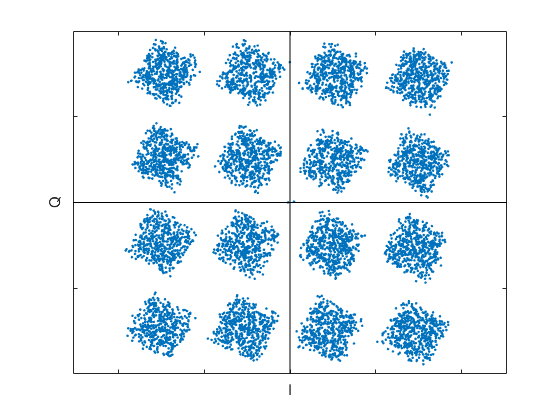
Figure 10. QAM-16 Constellation plot of Qdown vs Idown for 2-path channel.
3. Phase Noise Model
Oscillator phase noise (time jitter) can be random or periodic, and can be transferred to the signal in various ways. Two common sources are the transmitter DAC sample clock and receiver ADC sample clock. Also, if the transmitter or receiver use mixers, any phase noise on the local oscillators will be transferred to the signal. Although you could say that phase noise occurs in the transmitter or receiver rather than in the channel, it is convenient to create a channel model for phase noise.
To add phase noise φ to a complex baseband signal Itx/Qtx, we just multiply by ejφ :
$$ I_{chan}+ jQ_{chan}= (I_{tx}+jQ_{tx})e^{j\phi} $$
The block diagram for the model is shown in Figure 11. For our examples, we will use sinusoidal phase noise:
$$ \phi(n)= \phi_{max}cos(\omega_0 nT_s) \qquad radians$$
Where φmax is peak phase deviation in radians. The Matlab function channel_phase_noise.m implements the complex baseband model for phase noise (see Appendix B of the PDF document).
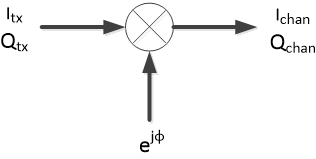
Figure 11. Complex-baseband channel model for phase noise.
3.1 Adding phase noise to a fixed signal vector
Suppose every sample from a complex-baseband transmitter has the fixed value of [Itx, Qtx] = [5/8, 5/8]. In other words, every sample is at the same constellation point of [5/8, 5/8]. (If this constant-value signal is then quadrature modulated, the transmitted signal is a sinusoid). Let’s add phase noise of peak amplitude π/20 radians and frequency of 3 Hz to this signal. Let the sample frequency equal 100 Hz. Here is the Matlab code for adding the phase noise:
N= 1024; % number of samples
Itx= 5/8*ones(1,N); % fixed constellation point
Qtx= 5/8*ones(1,N);
phi_max= pi/20; % rad peak phase deviation
f0= 3; % Hz phase modulation frequency
fs= 100; % Hz sample frequency
[Ichan,Qchan]= channel_phase_noise(Itx,Qtx,phi_max,f0,fs);
Qchan vs. Ichan is plotted in Figure 12. The phase excursion of the blue trace is +/- π/20 radians. The spectrum of the signal with phase noise is shown in Figure 13. Phase modulation sidebands appear at multiples of 3 Hz.
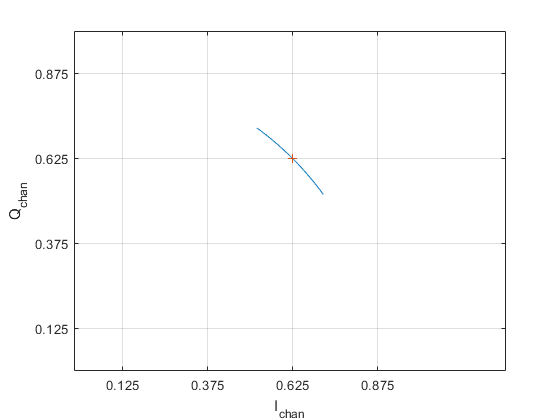
Figure 12. Sinusoidal phase noise added to fixed signal vector [Itx, Qtx] = [5/8, 5/8].
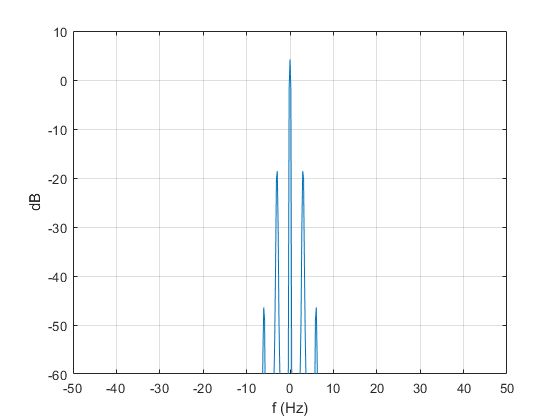
Figure 13. Spectrum of Ichan + j*Qchan with sinusoidal phase noise.
3.2 QAM-64 signal with added phase noise
Now we’ll add sinusoidal phase noise to a QAM-64 signal. The sample rate and noise frequency are the same as used in the previous example. Peak amplitude of the noise is .06 radians. The Matlab code to generate the complex-baseband signal, add phase noise, and plot the receiver constellation is as follows:
M= 64; % constellation order
N= 8192; % number of symbols
[Itx,Qtx]= qam_tx(M,N); % create complex baseband QAM signal
phi_max= .06; % rad peak phase deviation
f0= 3; % Hz phase modulation frequency
fs= 100; % Hz sample frequency
[Ichan,Qchan]= channel_phase_noise(Itx,Qtx,phi_max,f0,fs);
qam_rx(M,Ichan,Qchan) % simplified QAM RX – plot constellation
The constellation plot of the received QAM-64 signal is shown in Figure 14. Like what we saw in Figure 12, the phase noise causes the symbols to be spread over arcs, with the worst spreading on the outer constellation points. For high constellation orders, it is important that phase noise be controlled. Otherwise, it can cause too many symbol errors on the outer constellation points.

Figure 14. QAM-64 constellation plot of Qdown vs Idown with added phase noise.
4. Gaussian Noise Model
The Matlab function channel_noise.m implements a complex baseband model for Gaussian noise (see Appendix B of the PDF document). It simply adds Gaussian noise to the I and Q signals:
Ichan= Itx + sigma/sqrt(2)*randn(1,L);
Qchan= Qtx + sigma/sqrt(2)*randn(1,L);
Here, sigma is the standard deviation of the noise and the noise added to the Q channel is independent of that added to the I channel. L is the length of the input signal vectors Itx and Qtx. The channel model is shown in Figure 15.
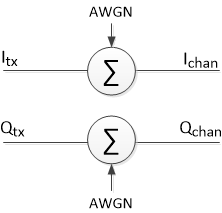
Figure 15. Complex-baseband channel model for Gaussian noise.
Here is the Matlab code to add Gaussian noise to a QAM-16 signal:
M= 16; % constellation order
N= 8192; % number of symbols
[Itx,Qtx]= qam_tx(M,N); % create complex baseband QAM signal
sigma= .05; % noise standard deviation
[Ichan,Qchan]= channel_noise(Itx,Qtx,sigma); % add noise
qam_rx(M,Ichan,Qchan) % simplified QAM RX – plot constellation
The spectrum of Ichan + j*Qchan is plotted in Figure 3b, and the receiver QAM constellation is shown in Figure 3d. The function qam_rx.m computes the MER of the signal as 29.7 dB. This is approximately equal to the level of the signal density relative to noise density in Figure 3b.
5. Summary
We have presented a few complex-baseband channel models for signal impairments. For the case of a QAM signal, our very simple receiver model allowed us to use the received constellation plot to diagnose impairments. We have seen that an interfering carrier creates rings around the constellation points, and phase noise creates arcs that are most pronounced on the outer points. Multipath creates a cloud of ISI on each constellation point. (Note: unlike our simple receiver model, a typical QAM receiver would include an adaptive equalizer to compensate for multipath).
Impairments can also harm receiver functions that we have not modeled; for example, the carrier recovery and clock recovery subsystems. Severe impairments can prevent lock of the carrier recovery or clock recovery loops.
Finally, you can cascade channel models to explore the effect of multiple impairments. For example, the constellation for a QAM-16 signal with both Gaussian noise and interfering carrier is shown in Figure 16, along with the Matlab code involved.
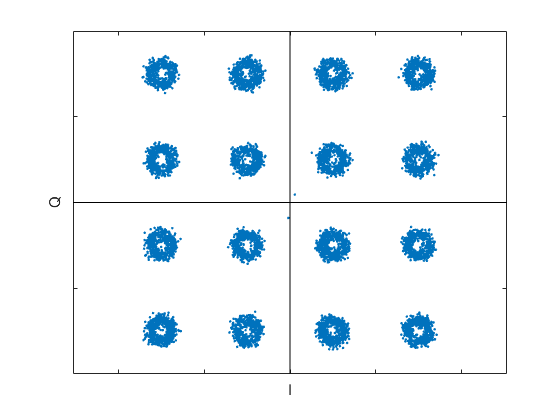
Figure 16. QAM-16 constellation plot of Qdown vs Idown with interfering carrier and Gaussian noise.
M= 16; N= 8192;
[Itx,Qtx]= qam_tx(M,N); % create complex baseband QAM signal
Anoise= .05; % noise standard deviation
[I1,Q1]= channel_noise(Itx,Qtx,Anoise); % add noise
Acw= .25; % interferer amplitude
f0= 14; % Hz inteferer freq
fs= 100; % Hz sample freq
[Ichan,Qchan]= channel_cw(I1,Q1,Acw,f0,fs); % add interferer
qam_rx(M,Ichan,Qchan) % simplified QAM RX – plot constellation
References
1. Robertson, Neil, “Compute Modulation Error Ratio (MER) for QAM”, DSP Related, Nov, 2019.
https://www.dsprelated.com/showarticle/1305.php
2. William H. Tranter, et. al., Communication Systems Simulation, Prentice Hall, 2004, section 4.1.1.
3. Rice, Michael, Digital Communications, Pearson, 2009, Section A.2.
4. Course Notes EE4061, “Intersymbol Interference/Nyquist Pulse Shaping”, Georgia Institute of Technology, 2011.
http://wireless-systems.ece.gatech.edu/4601/lectures-2011/week10.pdf
Neil Robertson December, 2019 Revised section 3 12/19/19
- Comments
- Write a Comment Select to add a comment


Rick,
No, all of the functions you list are in Appendix A or Appendix B of the PDF document attached to the post. You probably already know this, but it is possible to select/copy the code from the PDF and paste it to create a Matlab script or function.
regards,
Neil

Hello Neil,
I've 2 questions about the root-nyquist FIR from your matlab code. Your code is :
% root-nyquist FIR with alpha = .25 and fs= 4*fsymbol from root_nyq3.m
b1= [12 -1 -10 -18 -17 -1 20 34 25 -7 -46 -62 -36 27 92 108 46 -77 -192 -206 -53 260 643 958];
b_nyq= [b1 1079 fliplr(b1)]/4096;
I would expect 2*sum(b1)+1079 to be equal to 4096 but it gives 4077, is this just due to the integer values or do I miss something else here ?
I haven't been able to locate the procedure root_nyq3.m. Is this something you've shared elsewhere ?
Kind regards
Reiner

Hi Reiner,
Yes, the small discrepancy is due to rounding. Since I wrote this article, I wrote a post on root-nyquist filter synthesis. The appendix of the PDF version of the post lists a Matlab root-Nyquist synthesis function. The function (which is only a few lines of code) is based on an algorithm from Prof. Fredric Harris.
regards,
Neil

Thanks a lot !
Reiner
To post reply to a comment, click on the 'reply' button attached to each comment. To post a new comment (not a reply to a comment) check out the 'Write a Comment' tab at the top of the comments.
Please login (on the right) if you already have an account on this platform.
Otherwise, please use this form to register (free) an join one of the largest online community for Electrical/Embedded/DSP/FPGA/ML engineers:




















